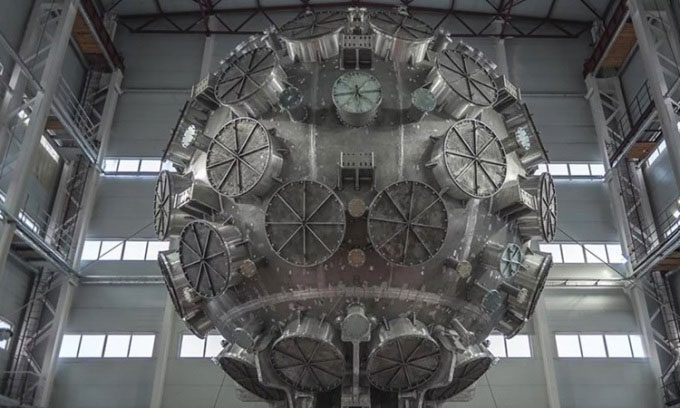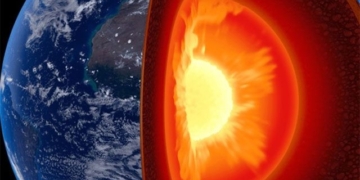The construction of the new Tsar UFL-2M laser, which is extremely powerful, is progressing on schedule, and the system is expected to reach its maximum power within 4 to 5 years.
Once fully operational, the UFL-2M will have a power output of up to 4.6 megajoules (MJ). In comparison, the laser at the National Ignition Facility of the Lawrence Livermore National Laboratory in the United States, which set a world record for laser energy output in October 2023, achieved a power of 2.2 MJ, producing useful energy of 3.4 MJ in thermonuclear energy. France also has a similar powerful laser. The Mégajoule laser facility in France, located on the outskirts of Bordeaux, has an energy output of up to 2 MJ.

Interaction chamber of the UFL-2M laser. (Photo: Russian Institute of Experimental Physics).
The UFL-2M consists of 192 laser beams at 0.53 microns (with energy generated by a solid-state neodymium laser), simultaneously directed into a spherical interaction chamber from all sides. The 120-ton chamber has a diameter of 10 meters and is covered by a 100 mm thick aluminum alloy. The laser hall of the facility is 130 meters long and was constructed with a specially reinforced foundation to prevent the effects of earthquakes. The facility also features a 16,000 square meter sterile room. The total cost of the project is approximately $485 million.
The concept for the UFL-2M laser system originated in the late 1980s following the construction of the groundbreaking 12-channel Iskra-5 laser system. The UFL-2M was developed to conduct large-scale controlled thermonuclear reaction experiments using inertial confinement of plasma. The first module of the UFL-2M became operational in 2020, with useful research commencing in 2021 and 2022.
“We have perfected the technology, physics, and physical models, and implemented the first phase of the physics platform related to the engineering system of the Tsar UFL-2M laser. I believe that within the next 4 to 5 years, this system could operate at maximum capacity and produce results,” said Dr. Valentin Kostyukov in an interview.
Alongside the prospect of achieving controlled thermonuclear reactions to generate clean energy—a dream of scientists worldwide for decades—the Tsar laser has numerous other potential applications, including modeling processes occurring at the moment of nuclear explosions, making it useful for research into new thermonuclear weapons.
This laser system could also support groundbreaking research in the field of high-energy density physics, specifically studying the properties of matter in extreme conditions, including ultra-high pressures and temperatures characteristic of powerful explosions. This could aid in understanding processes occurring within the Sun and many other stars.
Russia is a pioneer and leader in laser technology. Soviet scientists Valentin Fabrikant, Alexander Prokhorov, Nikolai Basov, and Zhores Alferov conceived, developed, and built the world’s first laser technologies in the 1950s and early 1960s.




















































